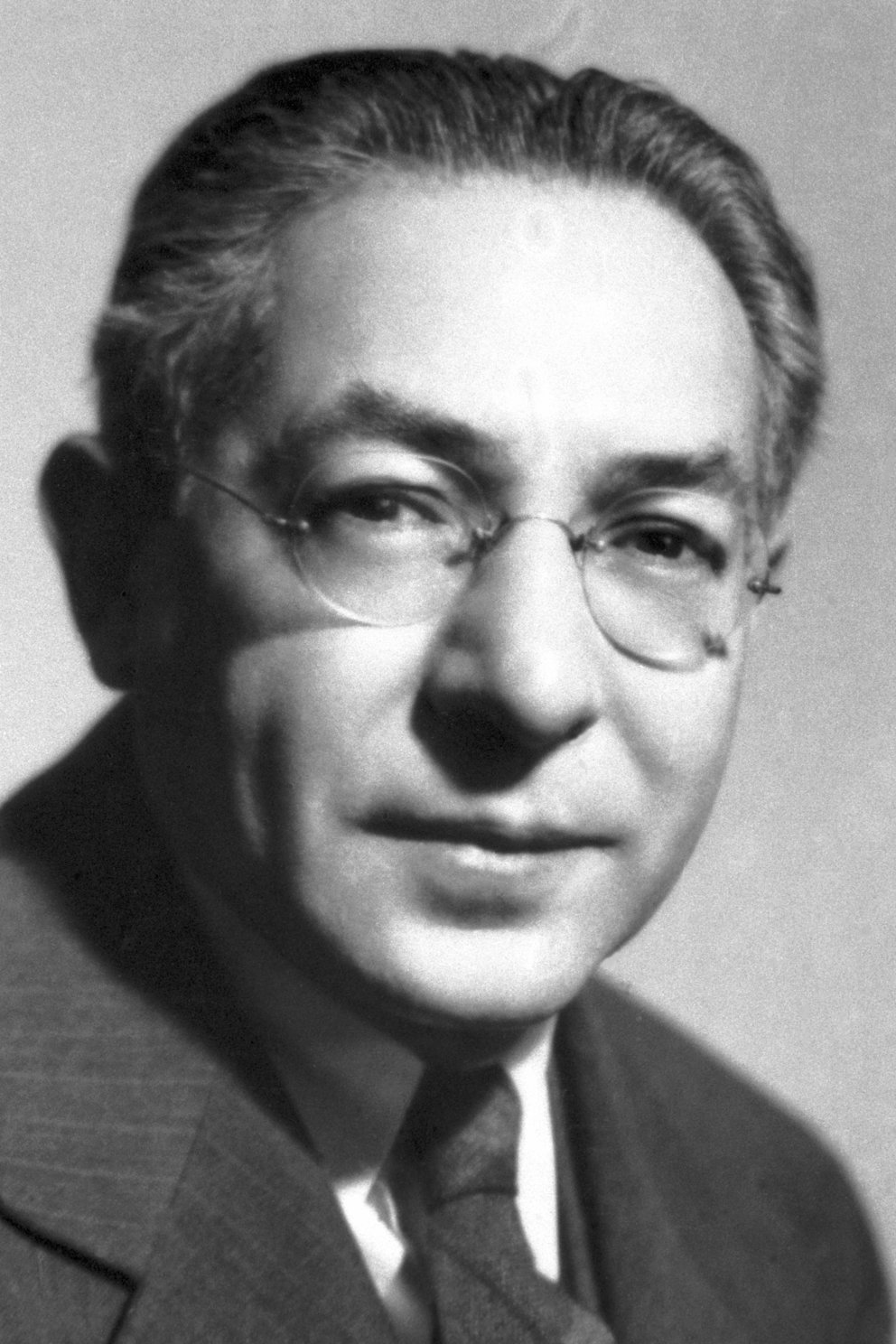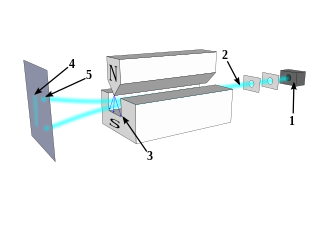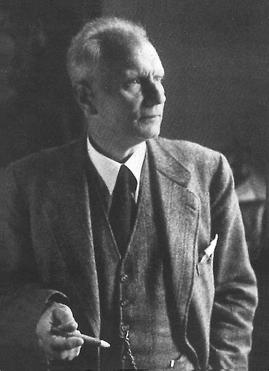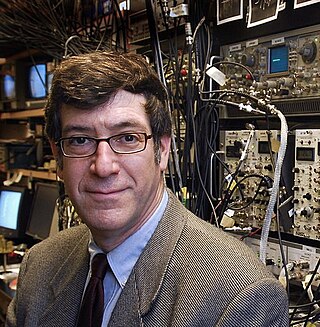Related Research Articles
Wave–particle duality is the concept in quantum mechanics that quantum entities exhibit particle or wave properties according to the experimental circumstances. It expresses the inability of the classical concepts such as particle or wave to fully describe the behavior of quantum objects. During the 19th and early 20th centuries, light was found to behave as a wave, and then later discovered to have a particulate character, whereas electrons were found to act as particles, and then later discovered to have wavelike aspects. The concept of duality arose to name these contradictions.

Laser cooling includes a number of techniques where atoms, molecules, and small mechanical systems are cooled with laser light. The directed energy of lasers is often associated with heating materials, e.g. laser cutting, so it can be counterintuitive that laser cooling often results in sample temperatures approaching absolute zero. Laser cooling relies on the change in momentum when an object, such as an atom, absorbs and re-emits a photon. For example, if laser light illuminates a warm cloud of atoms from all directions and the laser's frequency is tuned below an atomic resonance, the atoms will be cooled. This common type of laser cooling relies on the Doppler effect where individual atoms will preferentially absorb laser light from the direction opposite to the atom's motion. The absorbed light is re-emitted by the atom in a random direction. After repeated emission and absorption of light the net effect on the cloud of atoms is that they will expand more slowly. The slower expansion reflects a decrease in the velocity distribution of the atoms, which corresponds to a lower temperature and therefore the atoms have been cooled. For an ensemble of particles, their thermodynamic temperature is proportional to the variance in their velocity. More homogeneous velocities between particles corresponds to a lower temperature. Laser cooling techniques combine atomic spectroscopy with the aforementioned mechanical effect of light to compress the velocity distribution of an ensemble of particles, thereby cooling the particles.

Isidor Isaac Rabi was an American physicist who won the Nobel Prize in Physics in 1944 for his discovery of nuclear magnetic resonance, which is used in magnetic resonance imaging (MRI). He was also one of the first scientists in the United States to work on the cavity magnetron, which is used in microwave radar and microwave ovens.
Matter waves are a central part of the theory of quantum mechanics, being half of wave–particle duality. At all scales where measurements have been practical, matter exhibits wave-like behavior. For example, a beam of electrons can be diffracted just like a beam of light or a water wave.

Otto Stern was a German-American physicist and Nobel laureate in physics. He was the second most nominated physicist for a Nobel Prize, with 82 nominations in the years 1925–1945, ultimately winning in 1943.

Polykarp Kusch was a German-born American physicist. In 1955, the Nobel Committee gave a divided Nobel Prize for Physics, with one half going to Kusch for his accurate determination that the magnetic moment of the electron was greater than its theoretical value, thus leading to reconsideration of—and innovations in—quantum electrodynamics.

Molecular-beam epitaxy (MBE) is an epitaxy method for thin-film deposition of single crystals. MBE is widely used in the manufacture of semiconductor devices, including transistors, and it is considered one of the fundamental tools for the development of nanotechnologies. MBE is used to fabricate diodes and MOSFETs at microwave frequencies, and to manufacture the lasers used to read optical discs.

In quantum physics, the Stern–Gerlach experiment demonstrated that the spatial orientation of angular momentum is quantized. Thus an atomic-scale system was shown to have intrinsically quantum properties. In the original experiment, silver atoms were sent through a spatially-varying magnetic field, which deflected them before they struck a detector screen, such as a glass slide. Particles with non-zero magnetic moment were deflected, owing to the magnetic field gradient, from a straight path. The screen revealed discrete points of accumulation, rather than a continuous distribution, owing to their quantized spin. Historically, this experiment was decisive in convincing physicists of the reality of angular-momentum quantization in all atomic-scale systems.

Walther Gerlach was a German physicist who co-discovered, through laboratory experiment, spin quantization in a magnetic field, the Stern–Gerlach effect. The experiment was conceived by Otto Stern in 1921 and successfully conducted first by Gerlach in early 1922.
Atomic coherence is the induced coherence between levels of a multi-level atomic system.
In physics, a Feshbach resonance can occur upon collision of two slow atoms, when they temporarily stick together forming an unstable compound with short lifetime. It is a feature of many-body systems in which a bound state is achieved if the coupling(s) between at least one internal degree of freedom and the reaction coordinates, which lead to dissociation, vanish. The opposite situation, when a bound state is not formed, is a shape resonance. It is named after Herman Feshbach, a physicist at MIT.
Quantum mechanics is the study of matter and its interactions with energy on the scale of atomic and subatomic particles. By contrast, classical physics explains matter and energy only on a scale familiar to human experience, including the behavior of astronomical bodies such as the moon. Classical physics is still used in much of modern science and technology. However, towards the end of the 19th century, scientists discovered phenomena in both the large (macro) and the small (micro) worlds that classical physics could not explain. The desire to resolve inconsistencies between observed phenomena and classical theory led to a revolution in physics, a shift in the original scientific paradigm: the development of quantum mechanics.
Atomic beam is special case of particle beam; it is the collimated flux (beam) of neutral atoms. The imaging systems using the slow atomic beams can use the Fresnel zone plate of a Fresnel diffraction mirror as focusing element. The imaging system with atomic beam could provide the sub-micrometre resolution.

Mark George Raizen is an American physicist who conducts experiments on quantum optics and atom optics.
Giacinto Scoles is a European and North American chemist and physicist who is best known for his pioneering development of molecular beam methods for the study of weak van der Waals forces between atoms, molecules, and surfaces. He developed the cryogenic bolometer as a universal detector of atomic and molecule beams that not only can detect a small flux of molecules, but also responds to the internal energy of the molecules. This is the basis for the optothermal spectroscopy technique which Scoles and others have used to obtain very high signal-to noise and high resolution ro-vibrational spectra.
The timeline of quantum mechanics is a list of key events in the history of quantum mechanics, quantum field theories and quantum chemistry.
Spin engineering describes the control and manipulation of quantum spin systems to develop devices and materials. This includes the use of the spin degrees of freedom as a probe for spin based phenomena. Because of the basic importance of quantum spin for physical and chemical processes, spin engineering is relevant for a wide range of scientific and technological applications. Current examples range from Bose–Einstein condensation to spin-based data storage and reading in state-of-the-art hard disk drives, as well as from powerful analytical tools like nuclear magnetic resonance spectroscopy and electron paramagnetic resonance spectroscopy to the development of magnetic molecules as qubits and magnetic nanoparticles. In addition, spin engineering exploits the functionality of spin to design materials with novel properties as well as to provide a better understanding and advanced applications of conventional material systems. Many chemical reactions are devised to create bulk materials or single molecules with well defined spin properties, such as a single-molecule magnet. The aim of this article is to provide an outline of fields of research and development where the focus is on the properties and applications of quantum spin.

Bretislav Friedrich is a Research Group leader at the Department of Molecular Physics, Fritz-Haber-Institut der Max-Planck-Gesellschaft and Honorarprofessor at the Technische Universität in Berlin, Germany. He is globally recognized for his pioneering research surrounding interaction of molecules with and in electric, magnetic, and optical fields as well as on cold molecules. He was admitted to the Learned Society of the Czech Republic in 2011.
The nucleon magnetic moments are the intrinsic magnetic dipole moments of the proton and neutron, symbols μp and μn. The nucleus of an atom comprises protons and neutrons, both nucleons that behave as small magnets. Their magnetic strengths are measured by their magnetic moments. The nucleons interact with normal matter through either the nuclear force or their magnetic moments, with the charged proton also interacting by the Coulomb force.

Immanuel Estermann was a Jewish German-born nuclear physicist and was professor at Carnegie Mellon University, University of Hamburg and Technion. Estermann is known for his lifelong collaboration with Otto Stern which pioneered the research on molecular beams in the 1920s. With Stern and Otto Robert Frisch, he also first measured the magnetic moment of the proton.
References
- ↑ van de Meerakker, Sebastiaan Y. T.; Bethlem, Hendrick L.; Vanhaecke, Nicolas; Meijer, Gerard (2012-03-27). "Manipulation and Control of Molecular Beams". Chemical Reviews. 112 (9). American Chemical Society (ACS): 4828–4878. doi:10.1021/cr200349r. hdl: 2066/103491 . ISSN 0009-2665. PMID 22449067.
- 1 2 3 Ramsey, N. F. (1988). "Molecular beams: our legacy from Otto Stern". Zeitschrift für Physik D. 10 (2–3): 121–125. Bibcode:1988ZPhyD..10..121R. doi:10.1007/BF01384845. ISSN 0178-7683. S2CID 120812185.
- ↑ "Kallmann, H.; Reiche, F. (1921). "Über den Durchgang bewegter Moleküle durch inhomogene Kraftfelder". Zeitschrift für Physik (in German). 6 (1). Springer Science and Business Media LLC: 352–375. Bibcode:1921ZPhy....6..352K. doi:10.1007/bf01327996. ISSN 1434-6001. S2CID 119947742.
- 1 2 3 Friedrich, Bretislav; Schmidt-Böcking, Horst (2021), Friedrich, Bretislav; Schmidt-Böcking, Horst (eds.), "Otto Stern's Molecular Beam Method and Its Impact on Quantum Physics", Molecular Beams in Physics and Chemistry, Cham: Springer International Publishing, pp. 37–88, Bibcode:2021mbpc.book...37F, doi: 10.1007/978-3-030-63963-1_5 , ISBN 978-3-030-63962-4
- ↑ "Wrede, Erwin (1927). "Über die Ablenkung von Molekularstrahlen elektrischer Dipolmoleküle im inhomogenen elektrischen Feld". Zeitschrift für Physik (in German). 44 (4–5). Springer Science and Business Media LLC: 261–268. Bibcode:1927ZPhy...44..261W. doi:10.1007/bf01391193. ISSN 1434-6001. S2CID 120815653.
- ↑ Kellogg, J. B. M.; Millman, S. (1946-07-01). "The Molecular Beam Magnetic Resonance Method. The Radiofrequency Spectra of Atoms and Molecules". Reviews of Modern Physics. 18 (3): 323–352. Bibcode:1946RvMP...18..323K. doi:10.1103/RevModPhys.18.323. ISSN 0034-6861.
- ↑ Rabi, I. I.; Millman, S.; Kusch, P.; Zacharias, J. R. (1939-03-15). "The Molecular Beam Resonance Method for Measuring Nuclear Magnetic Moments. The Magnetic Moments of 3Li6, 3Li7 and 9F19". Physical Review. 55 (6). American Physical Society (APS): 526–535. doi:10.1103/physrev.55.526. ISSN 0031-899X.
- ↑ The Rabi molecular-beam method - The Feynman Lectures on Physics
- ↑ Gordon, J. P.; Zeiger, H. J.; Townes, C. H. (1954-07-01). "Molecular Microwave Oscillator and New Hyperfine Structure in the Microwave Spectrum of NH3". Physical Review. 95 (1). American Physical Society (APS): 282–284. Bibcode:1954PhRv...95..282G. doi: 10.1103/physrev.95.282 . ISSN 0031-899X.